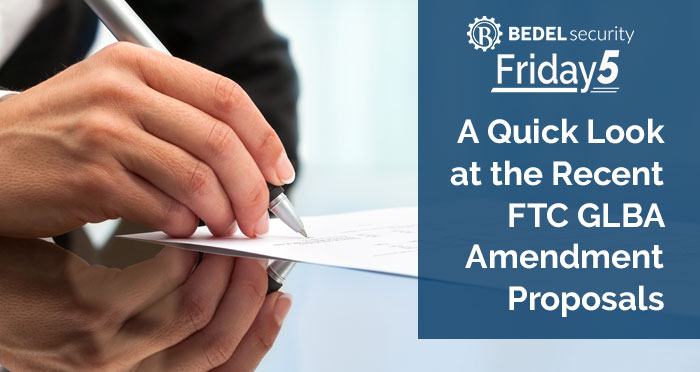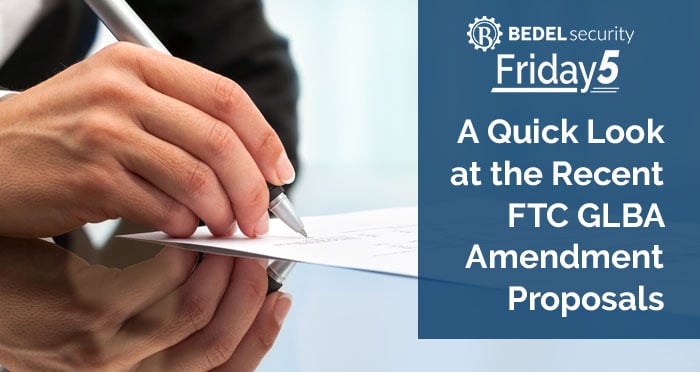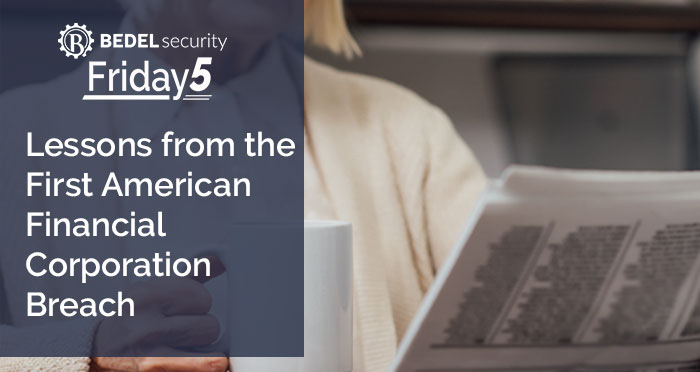Lessons from the First American Financial Corporation Breach
On July 21, 2020, the New York State Department of Financial Services (NYDFS) issued charges against First American Financial Corporation, a...


Show of hands: how many people wish they could comment on Congressional bills and/or speak directly to the lawmakers responsible? Unfortunately, the insular nature of formal Congressional lawmaking makes this highly unlikely.
However, the FTC’s proposed amendments to the Gramm-Leach Bliley Act’s Safeguards and Privacy Rules provide just such an opportunity to directly interact and help shape the regulations that govern our organizations. Through Notice of Public Rulemaking (NPRM), the FTC has been soliciting comments and feedback about these upcoming changes. The first comment period, for the Privacy Rule, ends on June 3th. But don’t fret, the Safeguard’s Rule comment period has just been extended until August 2nd.
The two NPRMs, which were published to the Federal Register in March, have set off a firestorm of blog commentary and conjecture about regulatory intent and the potential impacts these changes may represent. The Privacy Rule NPRM (84 FR 13151) largely focuses on alignment with the Dodd-Frank Act’s revisions to and transfer of GLBA rule-making authority, and thus hasn’t worried most organizations. However, the more significant of the two is the Safeguard’s Rule NPRM (84 FR 13158).
The amendments to the Safeguards Rule propose extensive changes and add a degree of rigor some organizations may find challenging. However, while the changes and additions are significant, they are not a departure from what most cybersecurity professionals would consider core best practices. The majority of the proposed additions were taken directly from NY State Department of Financial Services’ 23 NYCRR 500 and the National Association of Insurance Commissioners’ NAIC Model Law 668.
It is also very likely that most organizations are already fulfilling most of the proposed requirement which are, in essence, a codification of current cybersecurity best practices into GLBA. Links to the complete NPRMs are provided above, but here is a quick synopsis of the more important changes your organization should be preparing for in the coming months:
16 CFR §314.4(a)
16 CFR 314.4(c):
Nothing listed above is shocking or set in stone. Each of these new requirements allows for alternative means of compliance meant to give organizations the ability to select the option(s) most reasonable for their budget and infrastructure. However, it is important to note that this type of legislation does seem to be the current trend. Case in point, for those living in Illinois, IL HB 2829 is a near carbon copy of 23 NYCRR 500 currently working its way through the Illinois legislature.
For anyone interested in commenting on the Safeguards Rule, here is the link: Regulations.gov.
If navigating the in and outs of regulatory compliance and good cybersecurity hygiene seems like a daunting task please don't hesitate to use us as a resource! Email us your questions any time at support@bedelsecurity.com.

On July 21, 2020, the New York State Department of Financial Services (NYDFS) issued charges against First American Financial Corporation, a...

Recently, the New York Department of Financial Services (“DFS”) released a proposed update to its 2017 “Cybersecurity Requirements for Financial...

You started with an Information Security Policy that covered the basics. Then one day an auditor walked in and asked to see your Data Destruction...